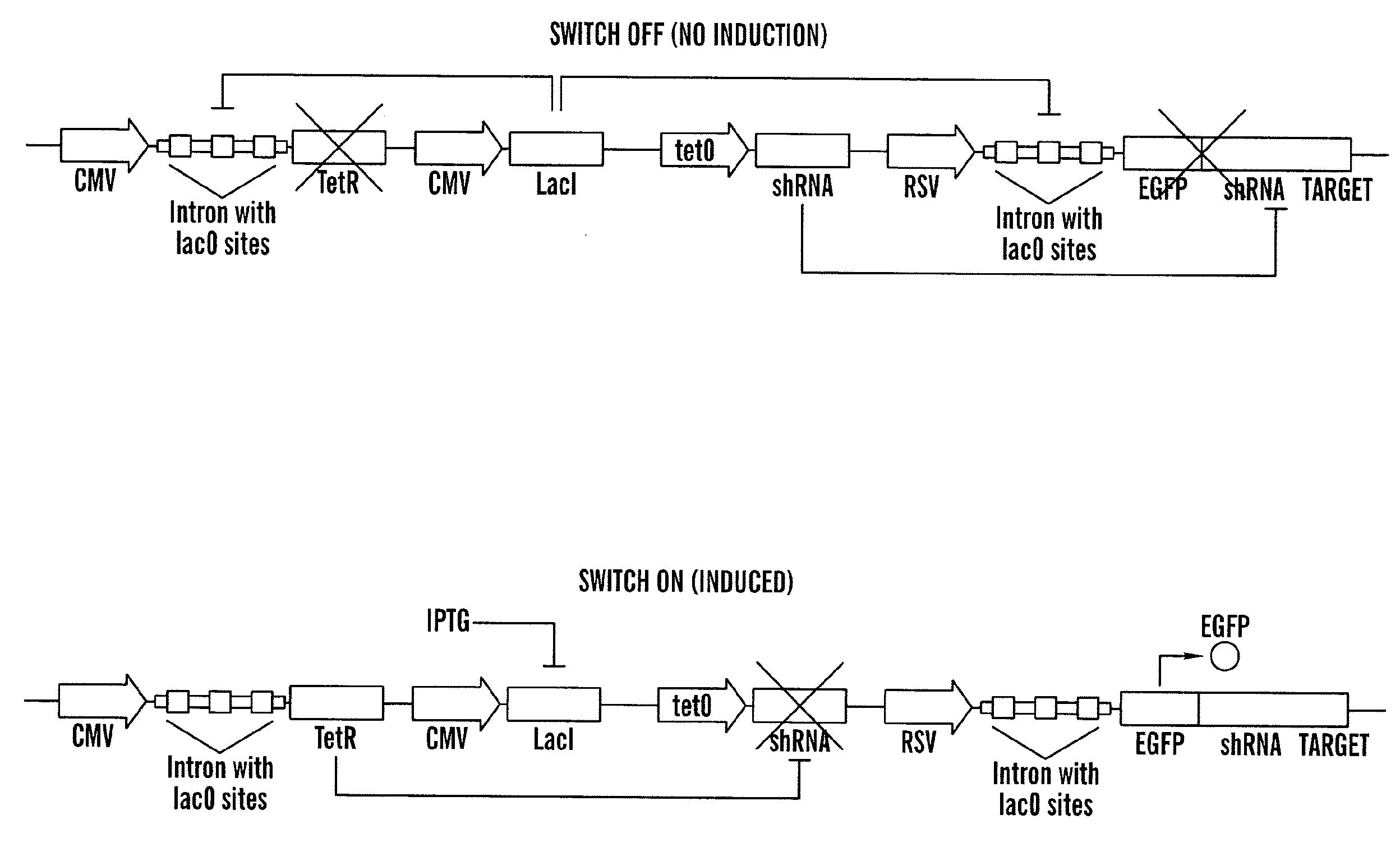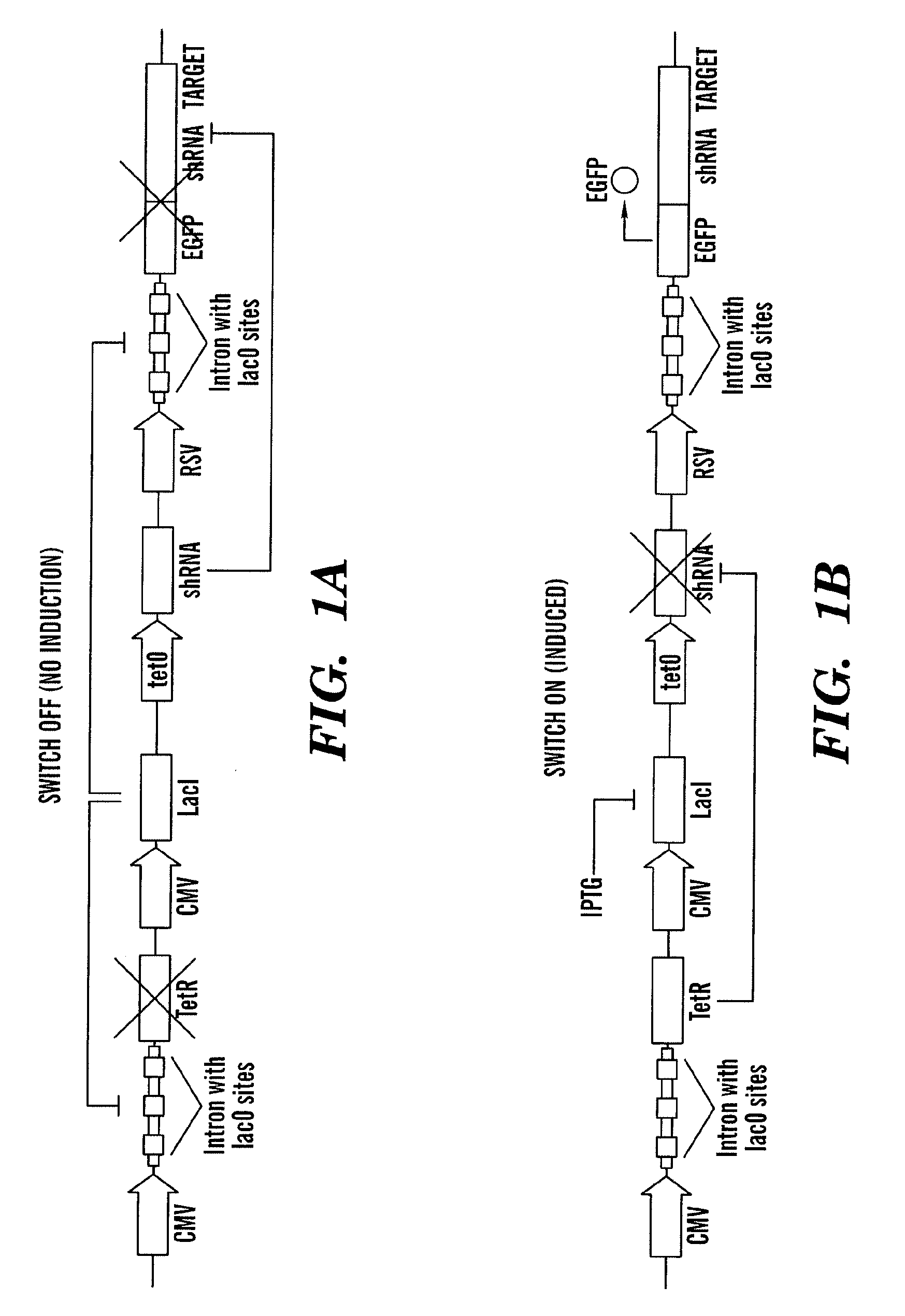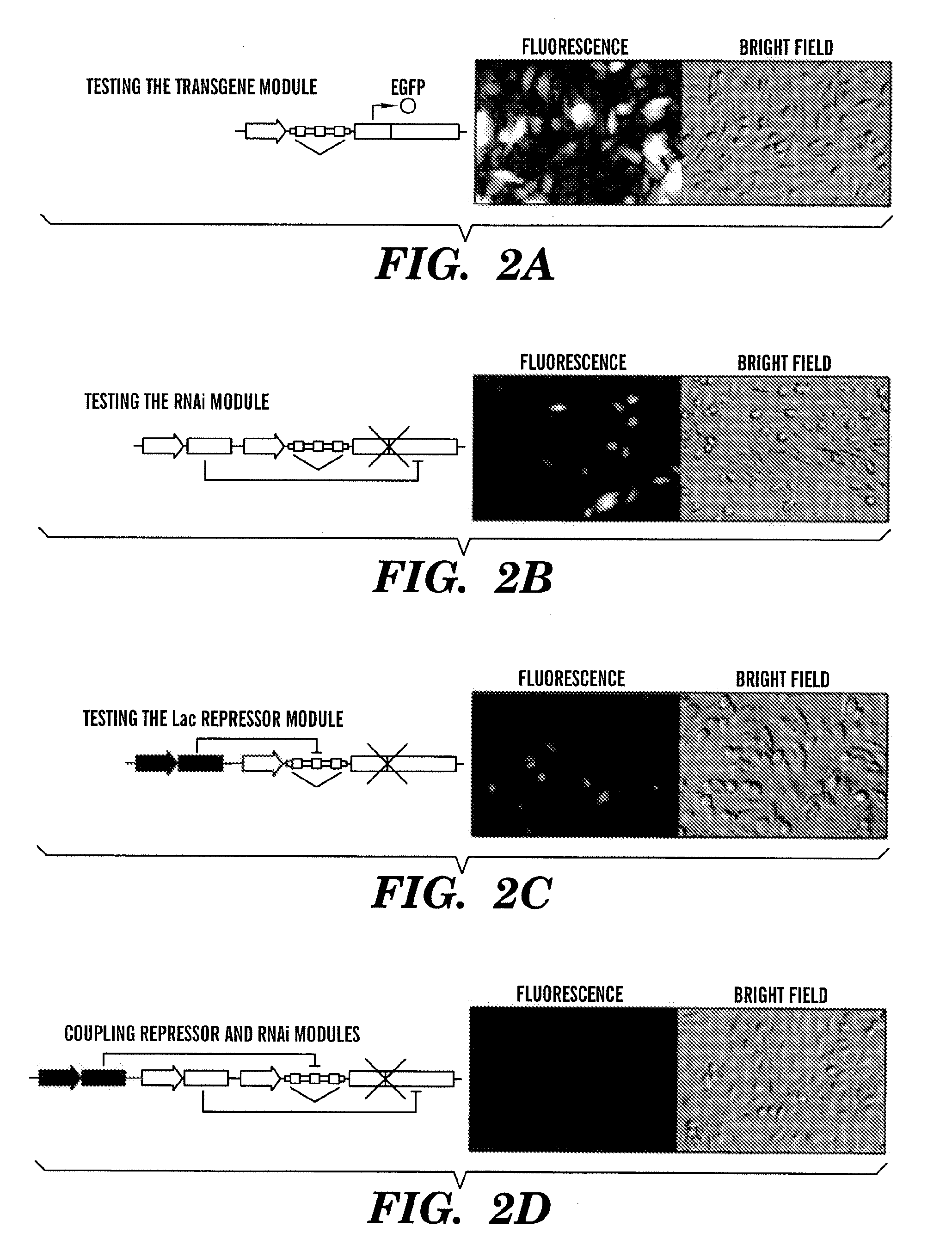Tunable genetic switch for regulating gene expression
a gene expression and gene technology, applied in the field of genetics, can solve the problems of limiting the regulation of gene expression, tamoxifen, inducing ligand, and preventing the gene of interest from being completely turned off, and achieve the effect of removing background expression
- Summary
- Abstract
- Description
- Claims
- Application Information
AI Technical Summary
Benefits of technology
Problems solved by technology
Method used
Image
Examples
example 1
[0386]Design of the Genetic Switch. The inventors initially used our genetic switch to regulate the expression of enhanced green fluorescent protein, EGFP (LTRiEGFP) which corresponds to nucleic acid sequence SEQ ID NO:4 or FIG. 10. LTRi-EGFP was designed so that in the off state (FIG. 1A), LacI provides transcriptional repression of EGFP and any leakage of the EGFP transcript is knocked down by the RNAi component of the switch. Specifically, the LacI repressor module produces LacI proteins that bind to the lac operator sites located in an intron adjacent to EGFP in the transgene module. Any EGFP mRNA that is transcribed as a result of incomplete repression is subsequently targeted for degradation by shRNA produced by the RNAi module. The shRNA molecules target the mRNA of EGFP via a synthetic target sequence that was placed in the 3′UTR. In addition to repressing the transcription of the transgene, the LacI proteins also repress the second repressor module in the system, the tetR r...
example 2
[0387]Construction and Functional Characterization of the Genetic Switch. The inventors next constructed LTRi-EGFP in a modular fashion and tested it using microscopy and flow cytometry (FIG. 2). First, the inventors designed a posttranscriptional module that uses a U6 promoter containing a tet operator site to transcribe a 42 nucleotide RNA transcript. This transcript forms a shRNA and has complementarity to a 19 nucleotide sequence in the E. coil β-galactosidase sequence. This 19 nucleotide target sequence was placed in the 3′UTR of the EGFP gene to be targeted by the shRNA, giving rise to a system that is not gene specific, allowing for any transgene to be con-trolled by the module. Furthermore, by designing the target sequence to have complementarity to β-galactosidase, the inventors designed the construct to minimize any potential off-target effects that could be caused by the RNAi module. Using transient transfections, the inventors compared the expression of EGFP with and wit...
example 3
[0391]Characterizing the Dynamics and Tunability of the Genetic Switch. Next, the inventors stably transfected LTRi-EGFP into CHO cells to characterize the dynamics of the system. Using flow cytometry, the inventors analyzed the switching-time characteristics of the network over a 14 day period (FIG. 3A, solid blue line). After 3 days of induction, the system was fully induced, exhibiting expression levels approximately 85-fold greater than basal levels. When the inducer was removed, full repression / knockdown was demonstrated in 3 days. The system could be repeatedly and reversibly induced on and off with the addition and removal of IPTG (FIG. 3A). To validate the levels of EGFP protein expression, immunoblots were performed on the specified days of induction (FIG. 7A). Consistent with our flow cytometry results, the immunoblots showed no detectable EGFP protein in the absence of inducer and a gradual increase in EGFP protein up until day 3 of induction. The inventors demonstrate by...
PUM
| Property | Measurement | Unit |
|---|---|---|
| Gene expression profile | aaaaa | aaaaa |
Abstract
Description
Claims
Application Information
 Login to View More
Login to View More - R&D
- Intellectual Property
- Life Sciences
- Materials
- Tech Scout
- Unparalleled Data Quality
- Higher Quality Content
- 60% Fewer Hallucinations
Browse by: Latest US Patents, China's latest patents, Technical Efficacy Thesaurus, Application Domain, Technology Topic, Popular Technical Reports.
© 2025 PatSnap. All rights reserved.Legal|Privacy policy|Modern Slavery Act Transparency Statement|Sitemap|About US| Contact US: help@patsnap.com



